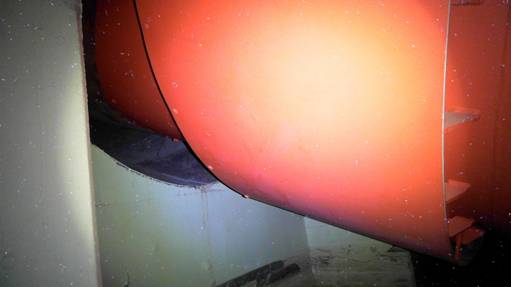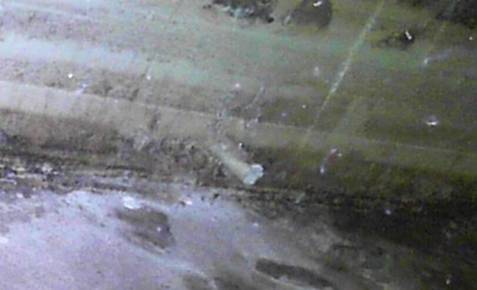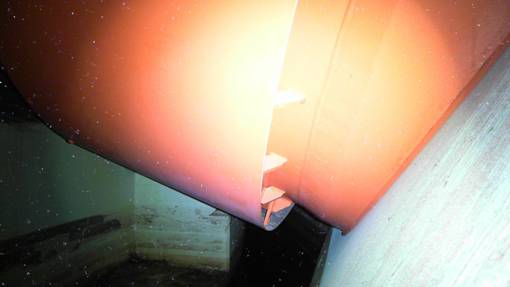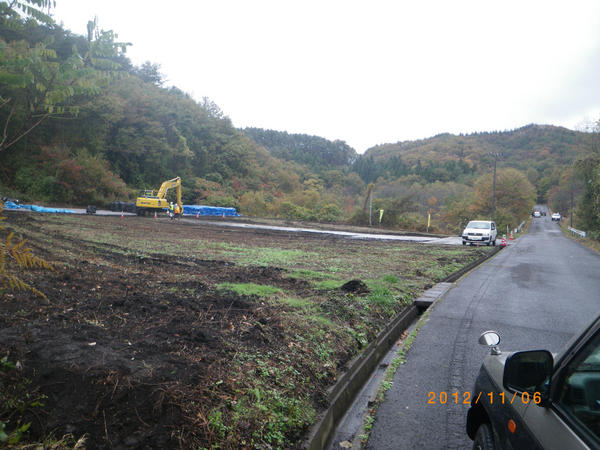All five experts on the Nuclear Regulatory Authority's panel agree it is highly likely that the fault that runs right beneath the Reactor 2 building at Tsuruga Nuclear Power Plant is an active fault.
Chairman Shunichi Tanaka doesn't think it is even possible at this point to proceed with the safety evaluation to restart the plant.
From Jiji Tsushin (12/10/2012):

敦賀原発、活断層の可能性=田中委員長「再稼働できない」-専門家一致・規制委
It may be an active fault at Tsuruga Nuke Plant, Chairman Tanaka says "Cannot restart", all experts at Nuclear Regulatory Authority agree
日本原子力発電敦賀原発(福井県敦賀市)で、敷地内の岩盤の亀裂(破砕帯)に活断層の疑いが指摘された問題で、原子力規制委員会は10日、現地調査の結果を検討する評価会合を開いた。2号機原子炉建屋の直下を通る断層について、専門家5人全員が「活断層の可能性が高い」との認識で一致。これを受け田中俊一委員長は、個人的考えと前置きした上で「今のままでは再稼働に向けた安全審査はとてもできないと判断した」と述べた。
Experts have raised doubt that fractured zones inside the Japan Atomic Power Co. Tsuruga Nuclear Power Plant compound (Tsuruga City, Fukui Prefecture) may be active faults. The Nuclear Regulatory Authority held a meeting on December 10 to evaluate the result of the field survey. As to the fault that runs directly beneath the reactor building of Unit 2, all five experts agreed that "it is highly likely to be an active fault". Chairman Shunichi Tanaka, prefacing that his remark is personal, said "In the current condition, we have decided there is no way we can conduct the safety evaluation for the restart of the plant."
規制委は近く会合を開き、評価結果の妥当性を判断するが、再稼働は認められない見通しとなった。運転停止が長期間続けば、廃炉を求める声が強まる可能性がある。原発の断層問題で、専門家調査団が活断層と判断したのは初めて。
NRA will hold a meeting soon to decide the appropriateness of the evaluation, but the prospect is that the restart will not be allowed. If the shutdown of the reactor continues for a long time, it is possible that people will demand decommissioning the reactor. This is the first time in the investigation of faults in nuclear power plants that a panel of experts determined a fault as active.
評価会合では、日本原電が調査のために掘った試掘溝の西側に、2号機原子炉建屋直下を通る「D-1破砕帯」の一部とみられる活断層が存在する可能性が高いとの認識で一致した。
In the evaluation meeting, the expert agreed that it is highly likely that an active fault, which is considered to be part of the "D-1 fracture zone" right underneath the reactor building of Unit 2, exists on the west side of the trench that Japan Atomic Power Co. dug for the investigation.
座長役の島崎邦彦委員長代理は、根拠として(1)政府の地震調査研究推進本部が活断層の目安とする40万年前より新しい十数万年前に動いていたと考えられる(2)原発近くを通る活断層「浦底断層」と非常に近い動きをしている-などを挙げた。
Deputy Chairman Kunihiko Shimazaki explained the basis of their conclusion as: (1) The fault is considered to have been moving, as late as 100,000 and several 10,000 years ago, much later than 400,000 years ago which is a criterion for an active fault as defined by the government's Headquarters of Earthquake Research Promotion; (2) The fault is moving closely together with a [known] active fault near the nuclear power plant, "Urazoko Fault".
I caught part of the live press conference that the Nuclear Regulatory Authority held on December 10 to announce their findings. Deputy Chairman Shimazaki and five experts who went to Tsuruga to investigate in early December were there, answering questions from the reporters.
What struck me was two things: 1) Reporters from the mainstream media seemed knowledgeable enough on the subject to ask intelligent questions to the experts to get the facts out; and 2) The experts pretty much gave straight answers, without any seeming vested interest or ego.
(After watching the beginning of the press conference, the first point still stands, but with the exception of the NHK reporter who was clearly designated by the Nuclear Regulatory Agency (secretariat) to ask the first question. His question was too vague and generalized, Dr. Shimazaki was perplexed as to what he was asking.)
There were some very interesting exchanges between the reporters and the experts who were all geologists, particularly Dr. Shimazaki (seismologist by training).
When asked by a reporter from Fukui TV why it was taking months for the operator of the plant to reach any conclusion but the Nuclear Regulatory Authority's experts were able to reach a conclusion (that an active fault runs beneath the reactor building) in two days, Dr. Shimazaki answered:
やはり事業者さんはですね、非常に微妙な立場に、特に調査をされている方がそういう立場におかれているんではないかとわたくしは思います。基本的には、活断層ではないことを証明するために調査を続けられているわけですから、その証明が出来ない限りは、ある意味調査を続けなければいけないという立場になるわけで、それは我々の立場とはぜんぜん違う立場になります。
After all, the plant operator is in a very delicate position, particularly those who actually do the investigation may be placed in a very delicate position, I suspect. Basically, [the operator] continues the investigation in order to prove that it is not an active fault, and as long as it cannot prove that it has to continue the investigation, so to speak. That is a totally different position than ours.
Isn't that the truth. I was rather shocked that Dr. Shimazaki very matter-of-factly stated it.
Then, a reporter from pro-nuke Yomiuri (and probably aligned well with the Nuclear Regulatory Agency) asked again, why the group of experts was able to reach the conclusion so quickly, compared to Ooi. Dr. Shimazaki, showing some heat, said,
今回の結論がもし皆さんが速いと言われるのであれば、わたくしは速いとは思いませんよ。はい。わたくし個人的にはですね、データがそろっていれば皆さんの意見は一致するはずなんで、きちんとしたデータがあれば判断は速いとわたくしは思っていますので、決して二日の調査で簡単に結論を出したな、という風に思われるのは心外だ、と思います。きちんとした調査がされていてきちんとしたデータがあれば、日にちはある意味関係ない、皆さんが一致した結論になる、というのがわたくしの思いであります。
If you think our conclusion this time [as compared to that on Ooi Nuke Plant] was made quickly, well I don't think it was quick. No. Personally, I think the same conclusion is reached if the valid data is there, and the decision can be made quickly if there is enough [valid] data. I am a bit annoyed if you think we made a casual decision with only the 2-day investigation. If the investigation is done properly and there is valid data, the number of days [to make decision] is in a way irrelevant, and the experts will agree on the conclusion, that's what I think.
indicating that unlike Kansai Electric (in Ooi Plant investigation) the operator did have a very good set of data but didn't want to draw any conclusion that they didn't want.
The Nuclear Regulatory Authority, before it was formed, was heavily criticized by many as being run by the "nuclear village residents" - people with strong ties to the nuclear industry in Japan, and as such it would be biased toward the industry and toward the restart of the nuclear power plants.
It must be an unpleasant surprise for the industry, so far.
The nuclear industry can hope for the day, very soon, when LDP's Abe is installed again as the Prime Minister of Japan, and fire these commissioners. Abe will have an excellent pretext of firing anyone who was not formally approved by the Diet (as PM Noda pushed through the appointment without consulting the Diet).
The Nuclear Regulatory Authority's reports are here. In his report at the site, Professor Takahiro Miyauchi of Chiba University Earth Science says Urazoko Fault and its related faults may be capable of generating earthquakes greater than M7.5, and urges the criteria for the evaluation to include not just fractured zones but this long stretch (35 kilometers minimum, as long as 65 kilometers) of faults right next to the plant.














 Tokyo Time
Tokyo Time
![[Most Recent Quotes from www.kitco.com]](http://www.kitconet.com/charts/metals/gold/t24_au_en_usoz_2.gif)

